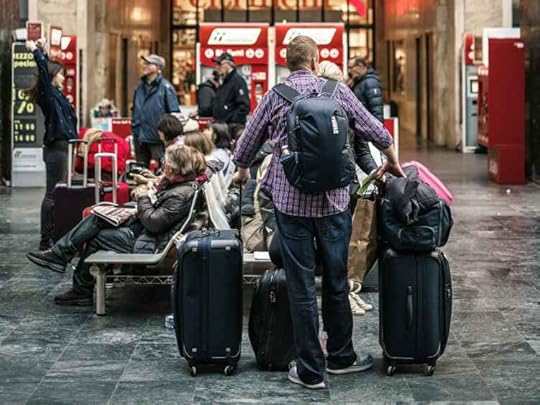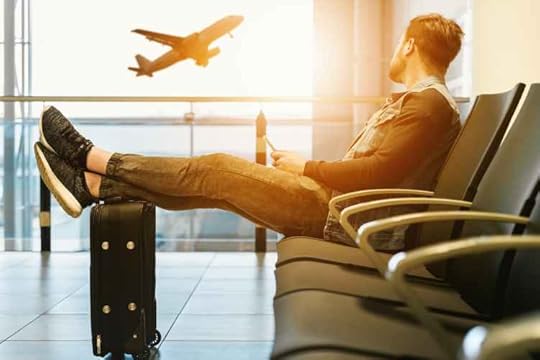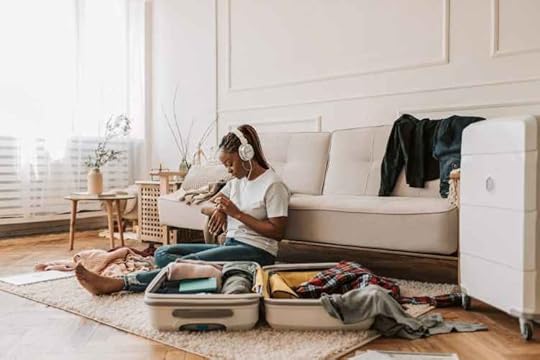Minimalist Travel
 Photo credit Tommaso Pecchioli-Unsplash /*! elementor - v3.20.0 - 20-03-2024 */.elementor-widget-text-editor.elementor-drop-cap-view-stacked .elementor-drop-cap{background-color:#69727d;color:#fff}.elementor-widget-text-editor.elementor-drop-cap-view-framed .elementor-drop-cap{color:#69727d;border:3px solid;background-color:transparent}.elementor-widget-text-editor:not(.elementor-drop-cap-view-default) .elementor-drop-cap{margin-top:8px}.elementor-widget-text-editor:not(.elementor-drop-cap-view-default) .elementor-drop-cap-letter{width:1em;height:1em}.elementor-widget-text-editor .elementor-drop-cap{float:left;text-align:center;line-height:1;font-size:50px}.elementor-widget-text-editor .elementor-drop-cap-letter{display:inline-block}
Photo credit Tommaso Pecchioli-Unsplash /*! elementor - v3.20.0 - 20-03-2024 */.elementor-widget-text-editor.elementor-drop-cap-view-stacked .elementor-drop-cap{background-color:#69727d;color:#fff}.elementor-widget-text-editor.elementor-drop-cap-view-framed .elementor-drop-cap{color:#69727d;border:3px solid;background-color:transparent}.elementor-widget-text-editor:not(.elementor-drop-cap-view-default) .elementor-drop-cap{margin-top:8px}.elementor-widget-text-editor:not(.elementor-drop-cap-view-default) .elementor-drop-cap-letter{width:1em;height:1em}.elementor-widget-text-editor .elementor-drop-cap{float:left;text-align:center;line-height:1;font-size:50px}.elementor-widget-text-editor .elementor-drop-cap-letter{display:inline-block} I remember when I was in Colombia I gave away a large luggage full of clothes and other assortments to my neighbor. I told her to give it to people who need it. She did. And it felt good, in more ways than one. Not only had I helped those more in need but I had taken a huge weight off my shoulder. Luggage that massive bag around in the Colombian summer was stressful. I realised then that minimalist travel was the way to go, especially living life as a digital nomad. But did I learn my lesson? No. As I write this, I have another large piece of luggage stored in an Airbnb hosts garage on the other side of the world in Spain… one day I will pick it up… or not.
I think for many of us worldly travelers, we can relate to an experience where we wish we packed less, sometimes up to the point of a whole piece of luggage. And those of us who have had baggage checked in only for it to go missing somewhere between our departure and destination, know of the stress and frustration that causes. Yeah, fuck you QANTAS, you ruined my easter break… anyway, let’s delve into minimalist travel.
Minimalist Travel
Minimalist travel is both a (relatively) new mindset and movement. The philosophy means less baggage and more meaningful experiences. It’s about packing efficiently with essentials that serve us well. It’s not about a suitcase filled with “just-in-case” items but about embracing a minimalist approach to travel. There’s a saying in the literature world:
“Kill your darlings.”
What it means is, if a sentence, scene or even a chapter isn’t serving your story, then cut it, no matter how much you love it.
And sometimes, you have to also kill your belongings, when it comes to travel anyway.
Moreover, minimalist travel is also about savoring a handful of destinations, soaking in their essence, and contributing positively. Plus, a commitment to low-carbon travel aligns seamlessly with your vision of a more sustainable and responsible journey.
But where did this idea of minimalism come from?
The Minimalist MindsetBefore minimalist travel, there was first the concept of minimalism. Rooted in the belief that less is more, minimalism is a conscious decision to simplify, declutter, and prioritize what truly matters. At its core, minimalism is a rebellion against the excesses of consumer culture. It urges us to break free from the constant pursuit of more, encouraging a shift toward mindful living. By paring down possessions and commitments, individuals find space to breathe, fostering a deeper connection with the things, experiences, and relationships that truly bring joy and meaning.
Joshua Fields Millburn and Ryan Nicodemus, the dynamic duo behind the acclaimed book and documentary, “Minimalism: A Documentary About the Important Things,” embarked on a transformative journey that reshaped not only their lives but also inspired countless others. With a shared realization that a life cluttered with possessions doesn’t equate to happiness, they embraced minimalism as a way to find purpose and joy in the essentials.

Their work emphasizes the profound impact of intentional living, illustrating that true wealth lies not in material abundance but in a life well-lived. Millburn and Nicodemus have become prominent voices in the minimalist movement, encouraging individuals to question their consumer-driven habits and seek a more meaningful existence.
And that’s what I love about them – they are anti-consumerists. And what happens when we consume less? We have more money for travel and adventure!
Minimalist Design Photo credit - Pexels-tranmautritam
Photo credit - Pexels-tranmautritam One of the most famous minimalists was the late Steve Jobs, co-founder of Apple which, at the time of writing, is the largest company in the world by market capitalization. Fueled by a deep appreciation for Zen philosophy, Steve Jobs ingrained minimalism into the essence of every design. His approach involved urging the team to strip away unnecessary elements, leaving only the essential core of the product.
Jobs was known for championing simplicity, advocating for a design philosophy that eliminated noise and centered on meeting the fundamental needs of the user. In embracing minimalism, he crafted products that seamlessly blended form and function, leaving an indelible mark on the world of technology and design.
Jobs’ embrace of minimalism extended past the office and his world-changing products. There are several reports from visitors to Steve Jobs’ home reporting there was almost no furniture in his house. This brings us to arguably the most common use of minimalism in design – interior design. Scandi Japanese interior designs are a textbook example of this.
Why Minimalism and Travel are the Perfect Match
At the heart of minimalist travel lies a shared commitment to intentional living, valuing experiences over possessions and cherishing the essence of each moment. I personally cannot stand when I hear another traveller brag about how many countries they’ve visited, when they have only stayed in the majority a week or two, and probably inside a resort! Heck, country-counters probably even count airport layovers as ticking off a destination.
Minimalism, with its emphasis on simplicity and mindful choices, seamlessly intertwines with the concept of slow travel, which is what us “slow-mads” are all about. Slow travel aligns perfectly with the minimalist ethos, encouraging us to break away from the hustle, appreciate the journey, and create lasting memories. Because that’s what it’s all about.
Experiential travel finds a natural ally in minimalism. It’s not about collecting passport stamps or ticking off destinations; it’s about the richness of encounters, the authenticity of experiences, and the depth of cultural immersion. Minimalism encourages us to shed the excess baggage, both physical and metaphorical, enabling us to fully engage with the world around us.
Carry-on Luggage Only
How many bags should you take? It’s human nature to want to take more stuff than necessary, “just in case”. But some travelers swear only to travel with carry-on luggage, especially for solo travel, myself included. Not only will it minimize stress but also save time as there’s no waiting at the baggage carousel. You land, walk straight through the airport security check, and exit the terminal.
It’s no easy feat, but with the right minimalist packing list and travel backpack, it can be achieved with just two bags (although one bag is also possible) – one for the overhead compartment, which has to meet certain dimensions or weight, typically 7kg (any extra weight is extra cost). The second bag can be hand luggage, which can be a handbag and even a small backpack. Most airlines require hand luggage that can fit underneath the seat in front of you.
Of course, this is much easier if you’re heading for two weeks in Southeast Asia where just a bag with shorts, t-shirts and flip-flops is all that’s required. But for those northern hemisphere destinations in the winter, you’re going to hope for more than just a t-shirt.
As such, let’s take a look at some other minimal packing list tips to enhance your travel experience.
Minimalist Packing List for your Travel Gear Photo credit - Pexels-Vlada-Karpovich
Photo credit - Pexels-Vlada-Karpovich Whether you’re exploring bustling cities, serene beaches, or ancient landscapes, the art of packing light is a universal passport to a more enriching and unburdened traveling experience.
The core principle is quality over quantity, where each item serves a distinct purpose. A well-thought-out toiletry kit with multi-functional products adds an extra layer of efficiency to your minimalist travel arsenal. The goal is to carry only travel items that enhance your journey, leaving room for the spontaneous and unexpected moments that make travel truly magical.
There are excellent travel bags on the market now that are designed for efficient packing. They come with special features such as a main compartment, and bottom compartment and some even fold out to a travel capsule wardrobe!
If you do not have the luxury of such luggage overcoming less space, consider investing in the following:
Suction/vacuum packs
Packing cubes
Compression cubes
Capsule wardrobes
Nomad backpack
Another excellent minimalist travel hack is buying some items at your destination, especially if it’s a lower-cost-of-living locale from where you’re from. Items you can pick up abroad could include:
T-shirts and long sleeves
First aid kit
Wet toiletries
Dry toiletries
Water bottle
Camera gear
Another trick we’ve heard is to fill a packing cube full of clothes to use as your onboard pillow to fit more things!
What is the 1 to 6 Rule for Packing?The 1 to 6 rule encourages a minimalist approach to packing, emphasizing versatility and efficiency in selecting clothing items for various occasions and climates during the journey. The rule suggests bringing six clothing items for every non-clothing item when preparing for a trip. For example, a wet toiletry bag is an essential item. You can now add two pairs of socks and four pairs of underwear to your minimalist travel packing list. This simple system is an excellent way to travel light.
What is the 5,4,3,2,1 Packing System?The 5-4-3-2-1 packing system is a personal favourite, and a popular method for minimalist packing that helps travelers prioritize essential items while keeping their luggage light and organized.
Here’s how it works:
5 – Select five clothing items: Choose five versatile clothing pieces that you prefer and that can be mixed and matched to create multiple outfits that feel comfortable. This is where your inner fashionista fun stuff comes out. But be sure to opt for items that are appropriate for the destination’s climate and activities.
4 – Pick four pairs of underwear and socks: Pack four pairs of underwear and socks to ensure you have enough for your trip. Consider packing quick-drying materials or bringing along laundry detergent for longer journeys.
3 – Bring three pairs of shoes: Limit yourself to three pairs of shoes—one for walking or hiking, one for casual wear, and one for dressier occasions. Choose shoes that are comfortable, versatile, and suitable for the activities you have planned.
2 – Pack two accessories: Select two belongings, such as scarves, hats, or belts, to add variety to your outfits and provide additional functionality. Accessories can also help personalize your look and adapt to different weather conditions.
1 – Include one personal item: Bring along one personal item, such as a toiletry kit, medication, or electronic device, that is essential for your comfort and well-being during the trip.
By following the 54321 packing system, travelers can streamline their packing process, avoid overpacking, and ensure they have everything they need for a successful journey. This method encourages a thoughtful selection of items and promotes a minimalist approach to travel packing.
Less baggage the betterSo, there you have it – along with emotional baggage, actual baggage will weigh you down too! Give it a go and see how light you feel. Now, if you excuse me, I gotta go find that baggage of mine in Spain.
The post Minimalist Travel appeared first on Tim Roberts.



